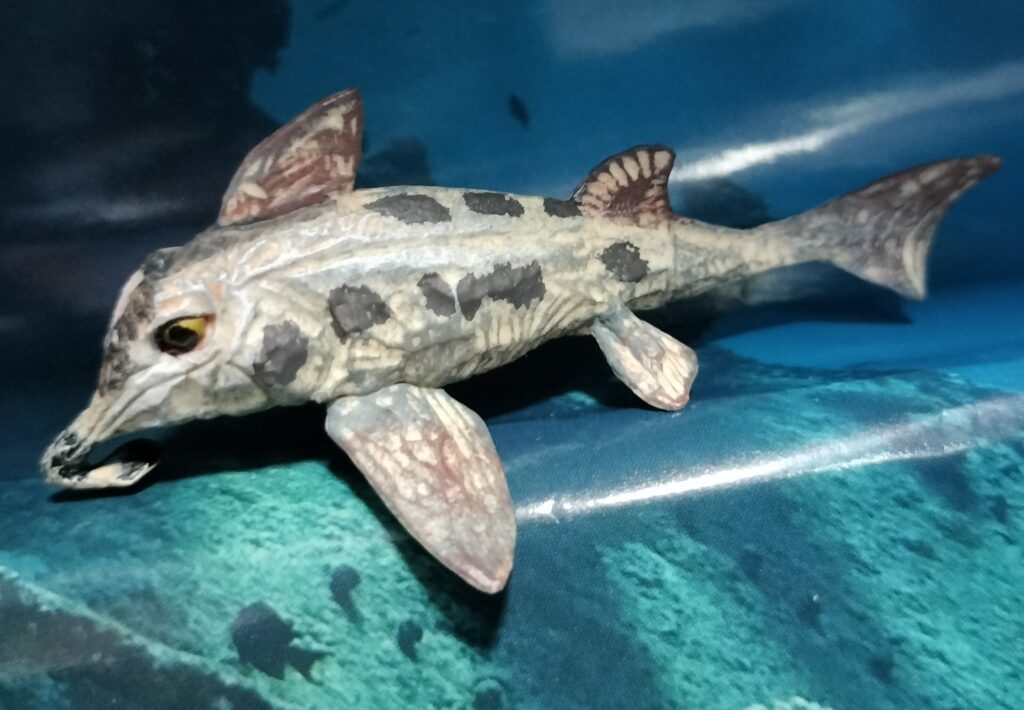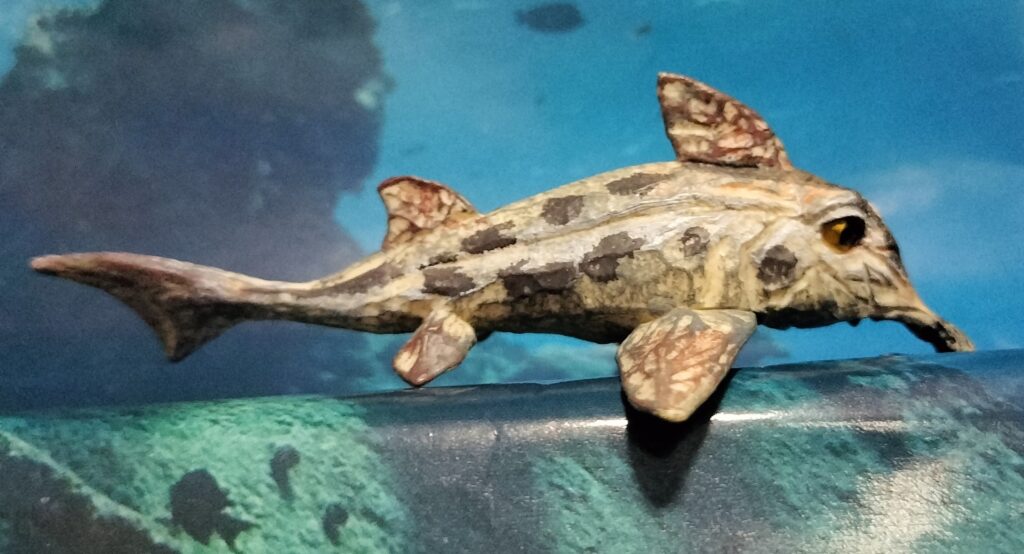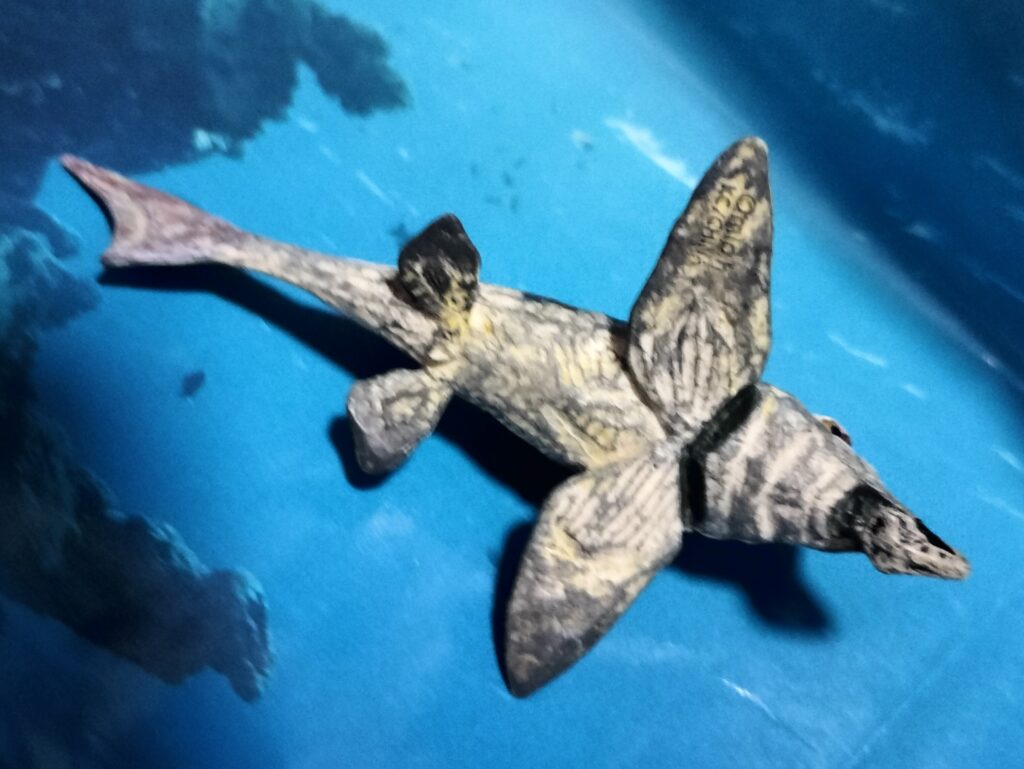Review and images by JimoAi; edited by bmathison1972
Holocephali was once a diverse group of fish, emerging in the Devonian and lasting until the present. They were once more diverse, occupying a lot more niches, including apex predators, but modern members are mostly restricted to the deep sea. Eugeneodontids are one of the more well known group amongst general audiences, as it includes the famous Heliocoprion and related genera like Edestus, which in many depictions are shown to have a shark-like body plan despite only being distantly related. The living members of the class are interesting, although often overlooked by the general public. Most have a shark like body, an eel-like tail, and move around in a similar method to rays, but elephant sharks (Callorhinchus) have a more shark-like body plan, especially having a caudal fin with 2 lobes. Despite being called elephant sharks, they are not true sharks. There are 3 recognizable species alive today and they inhabit deep waters off the Southern Hemisphere. The name elephant shark comes from the trunk-like snout they have, which is used to help these fish sift through the substrate for tasty inverts to eat. They are a mid-sized fish, ranging from 70 to 125 cm long and like other chimaeras, reproduce by laying eggs which the males fertilize with his claspers, like true sharks. They are preyed upon by sharks and recently, it was found out that leopard seals prey on these fish too, with some seals still having the fish’s spines stuck on their throat. While not in immediate threat, like a lot of deep sea species, they are victims of deep sea trawling and could end up being a threatened species without us knowing, as there is very little information about them mostly due to their habitat being hard to access by us humans. Fortunately, the elephant shark seem to do alright in captivity and I have had the opportunity to view these weird and ancient fish in person.

About the figure: this chimaera measures 9.2 cm from the snout to the tip of the caudal fin, putting it at the 1:7.5-1:13 scale range. The figure is sculpted in a static neutral pose and is part of Kitan Club Art in the Pocket line, which features animals being sculpted in the style of wooden sculptures by Japanese artist Mio Hashimoto. From what I’ve seen, there has been a lot of aquatic animals made for aquariums, in addition to some felines. Based on the tail shape, I am databasing this figure as the Australian ghostshark, C. milii. This figure is a female due to the lack of claspers.

Being based on a wooden sculpture, this figure has sculpted creases and ridges to give it a wooden texture. However, this elephant shark doesn’t look to jarring and it should fit really well amongst many other sea animal figures. It’s worth noting that the figure comes in 2 pieces to fit in the gashapon ball, but it looks seamless once pieces together.

The figure is painted in a grey color with a yellowish main body. Red accents can be seen on the fins. There’s darker grey speckling and facial patterns with a white circle in the middle, although it does look pixelated. The eye is golden-brown with a black pupil. A lateral line is sculpted and there don’t seem to be any fin rays, which chimaeras have. All the fins seem to be correct, especially the enlarged pectoral fins which help it with swimming, and the signature trunk-like snout is present.

While the real elephant sharks have smoother skin, I don’t think this model detracts from being a great figure of the genus, as well as being the only one currently on the market. It serves it’s purpose in being a wooden sculpture that’s a good replica of a real animal. I assume this figure was first released in 2021/2022 and has either a re-release or a long production run, which why I see it appear quite inexpensively online. Chimaeras are really sparce on the market and the only other ones I’m aware are based on the silver chimaera, so it would be nice to see other species such as the longnose chimaera or the spotted ratfish be made.
Disclaimer: links to Ebay and Amazon on the AnimalToyBlog are affiliate links, so we make a small commission if you use them. Thanks for supporting us!



